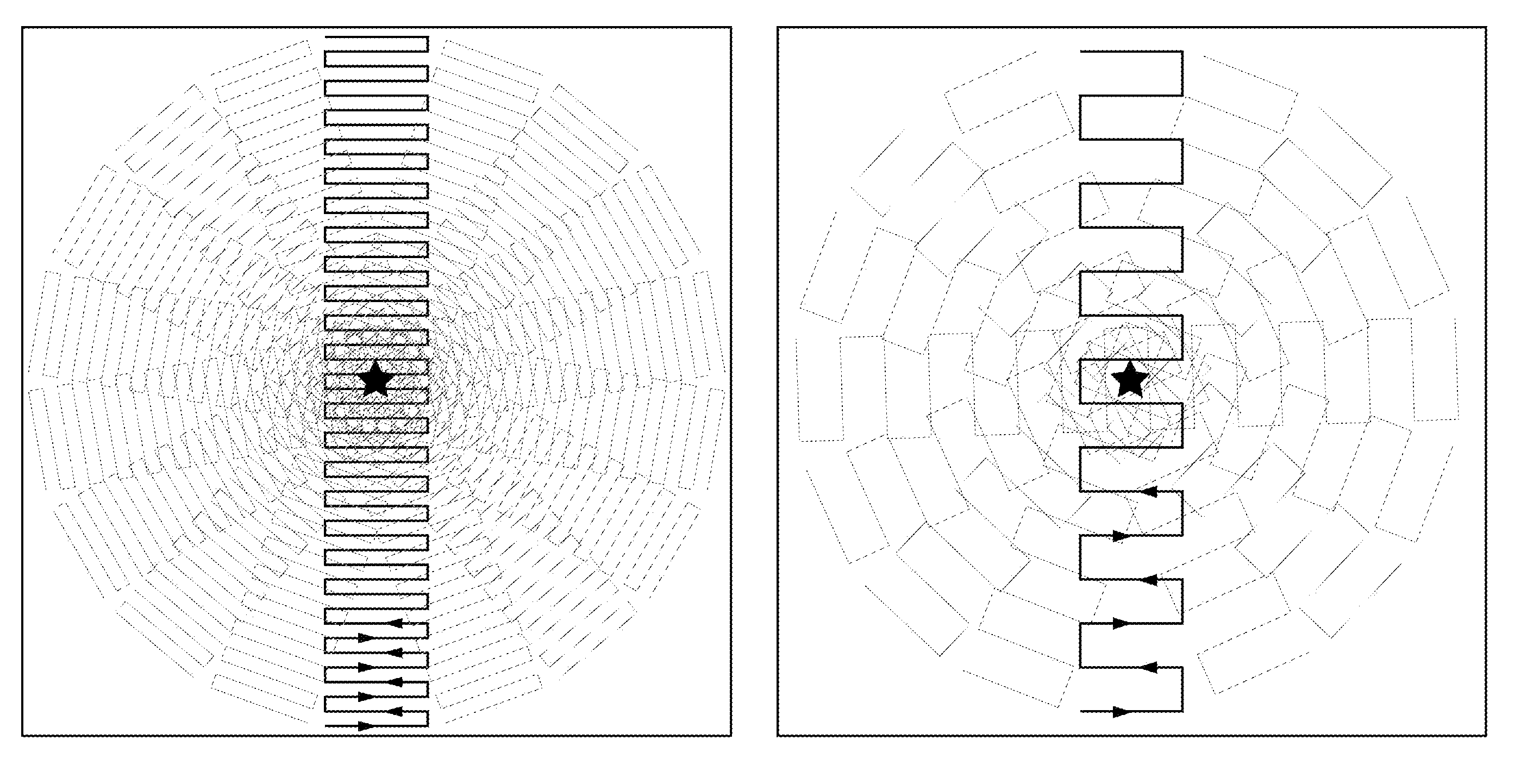MRI data acquisition using propeller k-space data acquisition
a data acquisition and k-space technology, applied in the field of magnetic resonance imaging, can solve problems such as affecting the accuracy of data acquisition, so as to reduce the echo spacing and increase the speed
- Summary
- Abstract
- Description
- Claims
- Application Information
AI Technical Summary
Benefits of technology
Problems solved by technology
Method used
Image
Examples
Embodiment Construction
Basic Theory for the Principal Idea
[0021]The invention will be described with reference to echo-planar imaging (EPI). For EPI, a field inhomogeneity, ΔB0(r), will cause local displacements (in [m]) of the object in the PE direction according to
[0022]dpe(r)=γ2πΔB0(r)prBWFOVpe:r=[x,y,z][1]
where prBW is the pseudo-receiver bandwidth defined as (ignoring gradient ramps and gaps between echoes)
[0023]prBW=1Δtpe=1Tro=1NroΔtro[2]
where Δtpe denotes the time between two consecutive sampling points in the PE direction, and Tro=Nro Δtro is the readout time for a single echo in the EPI train, where Tro is echo pacing and Nro is resolution. Combining Eqs. [1] and [2] gives
[0024]dpe(r)=γ2πΔB0(r)TroFOVpe=γ2πΔB0(r)ΔtroNroFOVpe[3]
[0025]Since the resolution in the PE direction, Npe, is not a part of Eq. [3], it is clear that reducing the number of PE lines will not affect the geometric distortion. Given a non-zero ΔB0(r), the geometric distortions are minimized by reduc...
PUM
 Login to View More
Login to View More Abstract
Description
Claims
Application Information
 Login to View More
Login to View More - R&D
- Intellectual Property
- Life Sciences
- Materials
- Tech Scout
- Unparalleled Data Quality
- Higher Quality Content
- 60% Fewer Hallucinations
Browse by: Latest US Patents, China's latest patents, Technical Efficacy Thesaurus, Application Domain, Technology Topic, Popular Technical Reports.
© 2025 PatSnap. All rights reserved.Legal|Privacy policy|Modern Slavery Act Transparency Statement|Sitemap|About US| Contact US: help@patsnap.com



